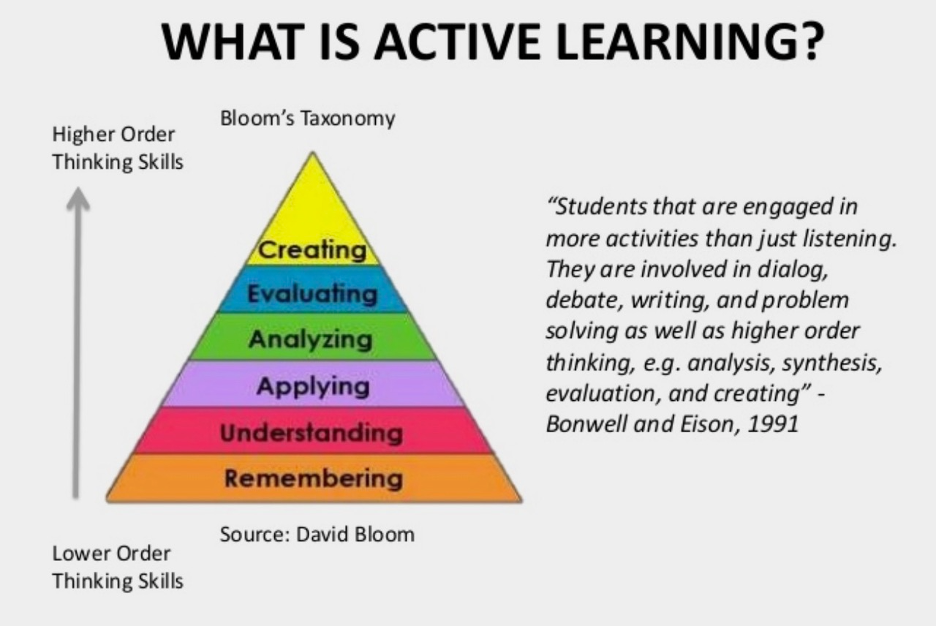Sparking Engagement Through Active Learning
- Rachel Ream
- Aug 14
- 4 min read
Updated: Aug 27
Ways to get students thinking, talking, and owning their learning.
Garden time is an important part of Active Learning. (Photos: Rachel Ream)
Active Learning improves understanding and retention. Often called “learning by doing,” Active Learning promotes metacognition—students reflect on what they are doing and why. Based on constructivist theory, students build their knowledge by actively participating in the learning process. For example, when teaching children about plants, students can read books about gardening and draw pictures of insects, which is valuable but does not offer the active engagement of working in the soil, planting seeds, and caring for a garden. Immersive involvement helps students become more self-directed learners as they begin to recognize, through experience, what adjustments are needed to help their garden grow. In simple terms, Active Learning enables children to fully engage in the love of learning through applied context.
What does Active Learning look like in the classroom?
Goal Setting & Self-Assessment: Students are taught to start with the end in mind, focusing on the final goal. Then, with the teacher's guidance, they break it down into smaller, achievable steps to reach that goal. Lectures are often replaced with hands-on activities, and students are encouraged to self-assess throughout the process.
Learning in Context: Learning in context is essential to Active Learning. Students need to understand why they are learning a specific concept and how it connects to real-world situations. To achieve this, we often use unit studies, which integrate all subjects—math, reading, writing, science, social studies, music, and more—allowing students to see firsthand why and how skills are developed across different disciplines. Whether exploring the Amazon River or the Universe within a unit study, we integrate all subjects for a deeper understanding. Life isn't just about math or just reading; it's a combination, and we begin this contextual learning now.
Open-ended Questions: As a teacher, I cue responses with curiosity by using open-ended phrases like, “There is no wrong answer to this. I genuinely want to hear your thoughts.” This reduces anxiety and encourages participation and exploration of the topic.
For subjects with a specific answer, like a math equation, I use phrases such as, “There is more than one way to solve this problem. Let’s share the variety of ways you used to reach the answer.” Receiving multiple perspectives in math provides insight into how different children approach math, introduces students to various ways of reaching an answer, and can also highlight misunderstandings in the academic vocabulary of mathematics. Sometimes, students do not reach the correct answer because they did not understand the question. Open discussion sheds light on these misunderstandings, helping me determine what to teach or clarify.
Always, when asking questions, I pause to let children gather their thoughts. It is not necessary to rush through a day of learning. I often post a question the day before we discuss it or even in the morning, for discussion in the afternoon. I like to think about questions before answering, and I want to show that same respect to my students.
How do students engage in Active Learning?
Beyond goal setting and participating in unit study projects, here are a few ways your students learn to become self-directed, active learners.
Think, Pair, Share (with a listening challenge) – as the name suggests, students are given a moment to think about the topic, then pair up with a peer and share their thoughts. I take this a step further by asking students to practice good listening skills, encouraging them to repeat back what their peer has just shared. Listening and then reiterating what was heard not only makes the other person feel understood but also improves listening and synthesizing skills, both of which are valuable in any field of study or work.
Exit Tickets (with a twist) – Exit tickets are brief quizzes or questionnaires used to quickly assess a student’s formative understanding. This focuses both on what students know and also provides feedback on what they don't know or understand. What are their questions? What is the most confusing part of what they learned that day? Can they describe it in a few sentences or draw a picture of their questions? Instead of just asking for a simple recap, I encourage students to reflect on where they need help.
Student-Generated Questions – Students are asked to create discussion prompts. This is challenging! Students often start the year only able to compose yes-or-no questions. However, with practice and experience engaging in open-ended questions, students begin thinking critically and start asking questions like, “Can you compare the immune system to something you know a lot about?” My young sons were engaged in learning about the immune system, and one brother’s question sparked a response from his older brother after they visited the USS Hornet in Alameda, California. (Spelling and punctuation fixed for clarity.)
"The immune system is like the United States Navy. The blood is the battlefield, just like the ocean is the Navy's battlefield. The Navy Officers are the T-cells. The T-cells write instruction manuals for the B-cells. The B-cells are Bob the Builder cells, and they make the antibodies, which are Y-shaped missiles. When the Y-shaped missiles are complete, the B-cell shoots them out, and they go find the germs. The Destroyer ships are the white blood cells, and they eat the cells that have antibodies on them." - Sven, age 7
Active Learning moves children beyond merely remembering information to being able to apply it. The ability to apply knowledge allows students to create something new and unique. This is what I want for my students: to have understanding that gives them the freedom to create.
Active Learning leads to student creations. (Photos: Rachel Ream)
For more information on Active Learning:
























